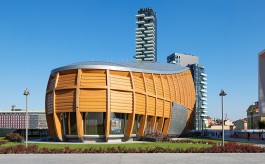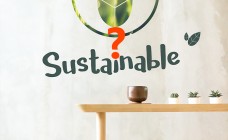Can retail eco-system lead India’s green focus?
By N Jayalakshmi | September 12, 2023
In the midst of all the geo-political dynamics, there was also a big call-out for environmental protection and sustainability at the recently concluded G20 Summit hosted by India. So what can retail as an industry do to drive this?
One of the highlights of the recently concluded G20 Summit in New Delhi was ‘Mission LiFE ‘- one of India's priorities during the G20 presidency. The stated objective of Mission LiFE is reportedly “to mobilise at least one billion Indians and other global citizens to take individual and collective action to protect and conserve the environment in the period 2022-28”.

According to the govt website, the Prime Minister introduced the mission of “LiFE (Lifestyle for the Environment)” to engage individuals in mitigating the adverse effects of climate change on the occasion of the UN Climate Change Conference (UNFCCC COP26).
It says the initiative encourages a lifestyle that focuses on mindful and deliberate utilization of resources and aims to change the present 'use and dispose of' consumption habits. It essentially aims to encourage the adoption of sustainable lifestyles in India and internationally to tackle the challenges of environmental degradation and climate change.
Given these and other initiatives taken in the face of pressing concerns regarding environmental damage, where does retail, one of the pillars of consumerism and economic development, stand? The Indian retail market is estimated to be worth $1.3 trillion as of 2022, accounts for over 10% of the country’s gross domestic product (GDP) and around 8% of the employment. These stats come with other disturbing stats - India is the second-largest consumer of plastic globally, with packaging materials contributing significantly to the plastic waste generated. Reportedly India generates around 3.4 million tonnes (MT) of plastic waste, and only 30 per cent of it is recycled. Over a five-year period, the plastic consumption in the country has risen at a compounded annual growth rate (CAGR) of 9.7 per cent . The waste generated often ends up in landfills, rivers, and oceans, causing irreversible damage to the environment and marine life.
While some brands and corporates have made sustainability a part of their agenda, either as compliance measures or part of their business vision, retail - a big part of the whole eco-system, can have its own system in place.
Some quick call outs:
Collaborative system in place: Partnering with waste recycling units, brands and also retail solution providers and suppliers for recycling/reusing of materials/e-wastes and regular wastes is certainly a need of the hour.
As Ken Nisch, Chairman of the globally renowned design agency JGA, shares in an exclusive column for Retail4Growth, “Finding vendors and suppliers who share your commitment to a sustainable future through their use and commitment to recycled materials in their products is important.” He cites examples of stores where sustainable sourcing, production, and installation, including the use of energy efficient LED lighting, are part of the brand story telling. Ian Johnston, Founder and Creative Director - Quinine, a world-leading retail experience consultancy also shares the example of Stella McCartney who has begun using biodegradable mannequins in her stores, and of Glossier who uses ‘living plant’ elements to define store spaces..
Sustainable retail design and architecture: To quote Ken again, “While much of the opportunity and story to tell around sustainability comes from the product, business operations, and commitment of brands to manage their use of resources, the design industry, independently, can also be part of the solution through offering our clients sustainable, smart, and creative solutions that lessen the impact of retail on the environment.”
Competitive incentives for green initiatives: It’s not uncommon for retailers and brands offer incentives to their shoppers for following sustainable practices. Some brands, including Apple, encourage customers to come back to their stores to extend the life of their existing products and are also encouraging the habit of repair. At the Nudie Jeans brand stores for example, customers can have their old jeans repaired or returned and get 20% off in-store, or they can donate them to the Nudie Jeans Recycling Program. But it would also be good to have a system in place that rewards businesses who are proactive about their sustainability initiatives - rewards not just in terms of tax/cost benefits but also in terms of recognition and awards.
Knowledge sharing and case studies
No doubt there are many businesses including consumer brands, retailers, design studios and retail solution providers who are focused on using sustainable materials and processes. But invariably these happen in silos and there is very little that comes to collective knowledge. A system to study and document successful case studies that are also aligned with business objectives could help establish industry green practices, suitable to specific segments within the retail eco-system.
Industry Green Body
Much of the above involves the existence and active participation of an industry body, that not just penalises lack of compliance, but also regulates, encourages and celebrates green/sustainable, environmentally practices in the retail eco-system.
Pic courtesy: Freepik.com









Comments